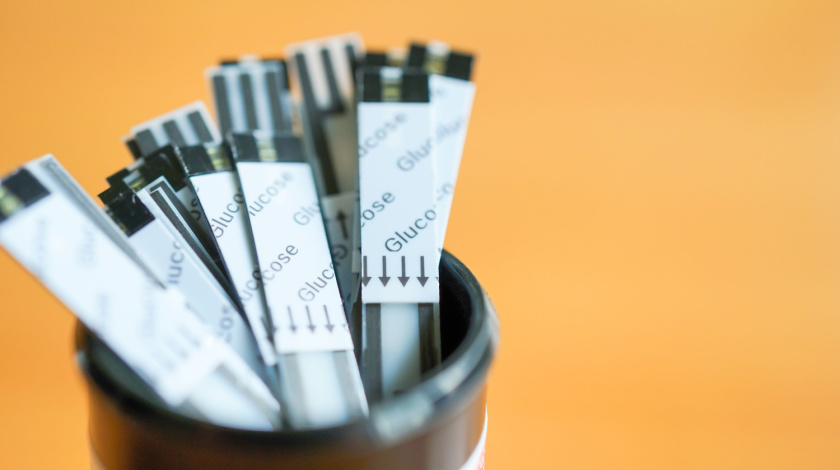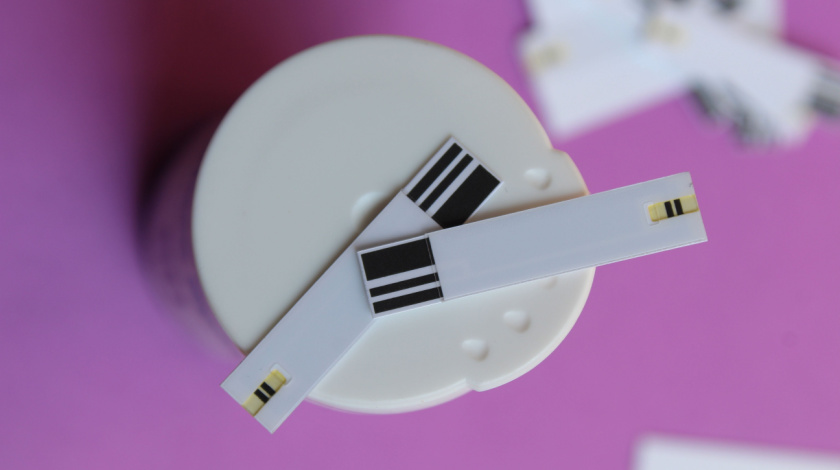Most people with diabetes tend to focus entirely on their glycemic goals. And honestly, that is what it should be. However, these affected individuals must also look into the analytical and pre-analytical parameters of their blood sugar monitoring routine. While the former includes diabetes measuring devices and diabetes strips, pre-analytical considerations encompass blood-related health factors such as hypotension and hypoxia.

In this blog, we will concentrate on glucometer strips and why they form the cornerstone of reliable blood sugar monitoring.
Understanding Glucometer Strips – A Vital Diabetes Tool
Glycaemic control is extremely crucial in reducing the long-term repercussions of diabetes. While the affected individuals employ self-monitoring technique to achieve their goals, healthcare professionals are responsible for suggesting the best tools available in the market and long-term interpretation of the resultant values. Currently, the most popular option available is glucometer which is partially non-invasive (pricking of finger is an essential step) and requires supplementary constituents such as glucometer strips. However, doctors recommend CGM systems for folks suffering from type-1 & gestational diabetes along with glucometer.
Nonetheless, CGM’s accuracy is often questioned and therefore people with diabetes around the world also use glucometer to double-check their blood sugar values. Interestingly, diabetic test strips are the bridge between humans and machine and are built using state-of-the-art Nanosciences and technologies. They are typically activated by electrochemical reaction (a process where electrons traverse between an electrode and electrolyte). In the case of glucometer strips the electrode is the gold circuitry while glucose oxidase, an enzyme is the electrolyte.
Choosing the Right Glucometer Strips – Factors to Consider
Unlike glucometer which is bought with the sole aim to manage diabetes through human readable numbers, a glucometer strip demands careful planning. Choosing the right glucometer strips can be a daunting task for people who are recently diagnosed with diabetes. Terms like “Calibration”, “Resetting”, “Shelf-life” and “Compatibility can be quite overwhelming. Unfortunately, there is no escaping, and therefore people with diabetes need to quickly understand and interpret these factors, and make sure their glycaemic goals do not face human, technical, and technological glitches. The best way to address the above-mentioned criteria is to buy strips that are brand & model complementing. For example, if you buy ABC01 glucometer, make sure you choose strips that are specific to this model. Although it frees you from the recalibration chore / mock test, it is a good idea to initiate this task every time you open a new pack of strips. Sugar test strips price also plays an important role because it needs frequent replenishment, and therefore at the very outset choose the one that suits your budget.
Mastering Glucometer Strip Usage – Tips for Accurate Testing
Accurate testing and interpretation is not an option for people with diabetes. Nor is there a scope for fluctuations or deviations. You need to fetch real-time readings which are closest to professional lab tests. For this, you will have to follow certain do’s and don’ts. Remember, strips have a short shelf-life, and it gets reduced further if the box is kept open or subjected to sunlight. Using these strips can throw up false or elevated glucose levels. Humidity is another factor you need to consider while storing the strips.
People with Diabetes need to understand that the glucose oxidase present on the strip is sensitive to water and therefore humid conditions can trigger self-induced chemical reaction. Switching between fingers ( left and right hand ) is another way to make sure you fetch accurate readings. Lastly, transfer the required amount of blood on the strip. Many folks, out of pain and fear, transfer miniscule amount of blood which produces inaccurate reading. Finally, make sure the entire blood sugar monitoring routine is hygienic in every sense.
Ensuring Compatibility – Pairing Glucometer Strips with Your Device
Most people with diabetes do not calibrate newly bought blood sugar test strips. This could be fatal for type-1 and patients with gestational diabetes, especially the former who also depend on glucometer for glycaemic control. Calibration is essential to tweak the device’s memory and thereby accommodate test strips that may have a slightly different chemical composition ( glucose oxidase – enzyme ).
If this variation is not synched or reprogrammed, the resultant reading could be inaccurate. For individuals who require regular insulin intake can face major medical upheaval (short-term and long-term). Moreover, pairing has to be done correctly. A recent study found that almost 16% patients miscoded their device. This resulted in roughly +/- 30% difference in the actual readings. Faulty setup also resulted in excess doses of insulin. These numbers are scary and therefore pairing is extremely important.
Troubleshooting Glucometer Strip Challenges – Common Issues and Solutions
At the very outset make sure to initiate a dummy test whenever a new pack of strips is opened. Storing the vial/box in a clean/cool environment not only protects the diabetic test strips from contamination but also shields it from environmental oxidation/degradation. Avoid using strips that have reached their expiration date. Switch between fingers, (left and right index fingers alternatively) if you are required to test your blood sugar levels multiple times a day. Also, make sure you don’t lick the finger before the test. Blood glucose tests conducted immediately after eating lunch/dinner will obviously provide a higher value. Make sure you wait for the prescribed duration before testing. As mentioned above, some of the inherent blood issues can also offer confusing results. Addressing them before the test assures consistent and accurate results.
Blood Glucose Test Strips Price & Glycaemic Goals – Whether you are diagnosed with diabetes or simply someone who is health conscious, you need to understand that test strips are extremely finicky (irrespective of the cost) if not handled with care. Personal hygiene also matters when it comes to attaining your glycemic goals.
Read More: How Many Diabetes Test Strips are Required per Month?
Conclusion –
Diabetes is overwhelming, to say the least. This often creates situations of chaos and ignorance. Most of the time, people with diabetes check their blood glucose levels robotically, without giving any thought to related health parameters. Mindless, rampant testing is another issue that people with diabetes need to address. These actions can throw your glycemic control goals out of the window. Calibration of device, compatibility, and choosing the right test strips and storage are some of the other prerequisites of the home BGM routine. Ignoring whatever reason can lead to short and long-term medical complications.
Disclaimer:The content of this article is compiled information from generic and public sources. It is in no way a substitute, suggestion, or advice for a qualified medical opinion. Always consult a specialist or your own doctor for more information. BeatoApp does not claim responsibility for this information .
Dr. Navneet Agarwal is an established and highly skilled Diabetology with over 25 years of experience in Diabetology & Obesity. He is well-regarded for his quality and patient-centered diabetes care. Also, keep track of your blood sugar levels with a Doctors’ approved smart glucometer and elevate your healthcare routine.




